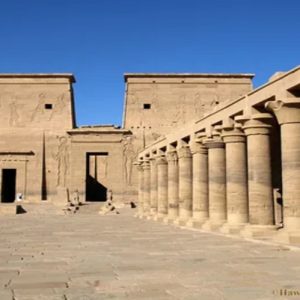I. Introduction II. History of the Kom Ombo Temple III. Sobek - The Crocodile God IV. Architecture of the Temple V. The Hypostyle Halls and their Significance VI. Decorations and Reliefs at the Kom Ombo Temple VII. Importance of the Temple Today VIII. Conclusion
Egypt is a land of ancient wonders and incredible temples, each with its unique story to tell. The Kom Ombo Temple is one such attraction, located in the city of Kom Ombo in Upper Egypt. It is a unique temple that is dedicated to two gods – Sobek, the crocodile god, and Haroeris, the falcon-headed god. This temple is a great representation of the skill and creativity of the ancient Egyptians, and it remains one of the top attractions in Aswan.

The Kom Ombo Temple was built during the Ptolemaic dynasty, which was a Greek dynasty that ruled Egypt after the death of Alexander the Great. The temple was built in the Roman invasion era, and some renovations were made later under the rule of emperor Trajan. It is believed that the construction of the temple began around 180 BC.

The temple’s dedication to Sobek is due to the fact that the area surrounding the temple was once a popular spot for crocodiles to sunbathe on the Nile shore. Sobek was a popular god in Ancient Egypt, and he was associated with fertility, power, and protection. The pharaohs of Egypt linked themselves to the gods to appear as chosen kings by the deities. The Kom Ombo Temple served as a religious center for the local people who worshiped Sobek.

The Kom Ombo Temple is a double temple, and it is built symmetrically. The temple has two entrances, two hypostyle halls, and two sanctuaries. The outer hypostyle hall is decorated with lotus floral capitals, sun images, and flying vultures on the roof. The inner hypostyle hall has ten thin columns with engravings of Ptolemy II making offerings to the gods. The symmetry of the temple is fascinating, and it showcases the exceptional architectural skill of the ancient Egyptians.

The hypostyle halls at the Kom Ombo Temple are remarkable. They are decorated with intricate engravings and reliefs that depict the gods and various offerings. The halls were designed to provide shade from the sun, and they served as a place for the people to gather for religious ceremonies. The symmetry of the halls is exceptional, and it adds to the grandeur of the temple.

Decorations and Reliefs at the Kom Ombo Temple:
The decorations and reliefs at the Kom Ombo Temple are fascinating. The small chapels were decorated with unfinished bas-reliefs, and the surviving reliefs of the façade depict an entire process of surgeries and surgery tools. These reliefs are believed to be the oldest representation of surgical instruments in history. The temple is also adorned with numerous carvings that showcase the stories of the gods.

Importance of the Temple Today:
The Kom Ombo Temple is an essential cultural and historical site in Egypt. It is a major attraction in Aswan and an important stop for Nile cruises. The temple is a fantastic representation of ancient Egyptian architecture and religious practices. It also serves as a reminder of the power and influence of the ancient gods in the lives of the Egyptians.

Conclusion:
The Kom Ombo Temple is a fascinating attraction that showcases the incredible skill and creativity of the ancient Egyptians. The temple’s unique dedication to Sobek and Haroeris, its double temple design, and its intricate engravings and reliefs all contribute to its beauty and importance. The temple is a must-visit for anyone interested in Egyptian history, culture, and architecture.